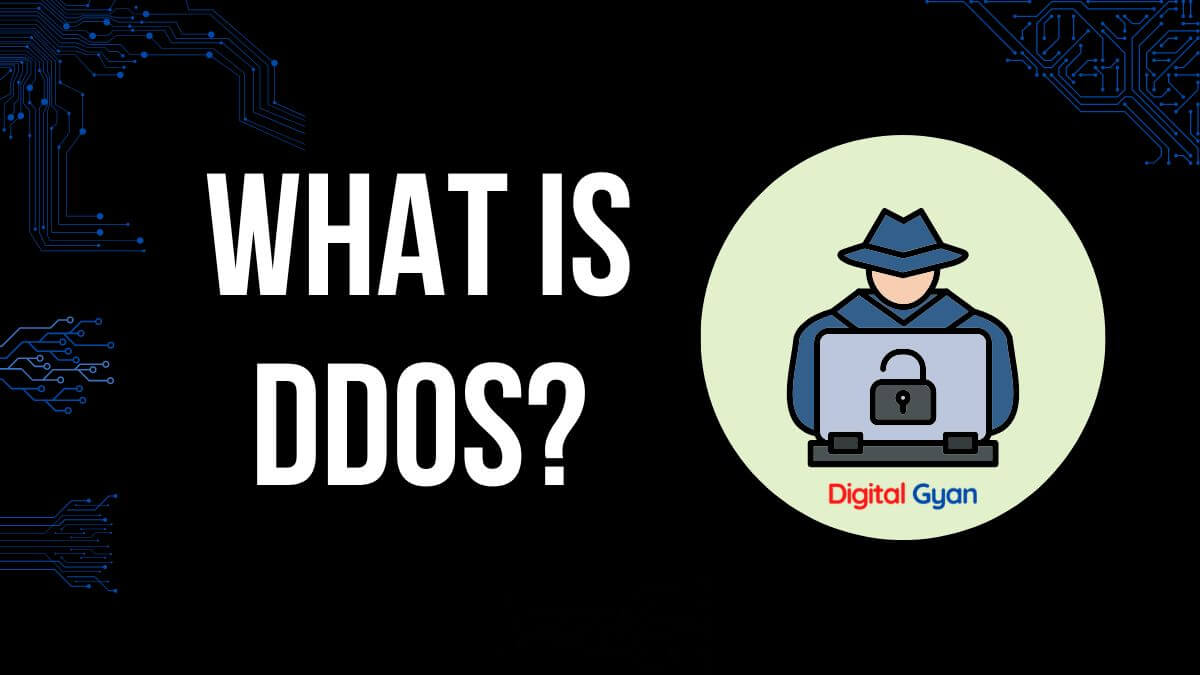What is Denial-of-Service Attack and How to Prevent it?
A denial of service can be defined as a malicious act aimed at preventing legitimate users from accessing specific websites and web services.
A denial-of-service (DoS) attack makes a machine or network resource unavailable to its intended users. A DoS attack can be launched globally and target any device or service, including websites, email servers, and video streaming services.
There are many different DoS attacks, but the most common type is the Distributed Denial of Service (DDoS) attack. In a DDoS attack, the attacker uses multiple devices to flood the target with traffic. This traffic can come from worldwide and can be difficult for the target’s servers to handle. As a result, the target’s resources become overwhelmed and unavailable to legitimate users.
Denial of service attacks can cause severe harm to an organisation. Numerous tools are capable of executing these attacks. These tools are known as Tribal Flood Network (TFN), Tribal Flood Network 2000 (TFN2K), and Trin00.
What is a distributed denial-of-service attack?
A distributed denial-of-service attack is a scenario in which multiple machines collaborate to assault a single target. DDoS attacks are frequently carried out on a massive scale using a collection of devices that have been taken over and are able to connect to the internet. Botnets are the term used to describe hijacked devices. Through the use of command and control software, the attackers effectively utilise the weak devices to take control of other devices. Once in charge, the attacker might direct their botnets to launch a distributed denial-of-service assault against their target.
There are several ways to protect your devices and networks against DoS attacks. The most crucial step is to install security updates as soon as they are released.

Why do attackers conduct DDoS attacks?
The two main reasons that attackers perform a DDoS attack are to protest against a company or a website and to extort money. They usually choose a target to attack after doing extensive research to identify a vulnerable website. Attackers will also carefully research the target’s services, financial records, and history of malicious activity.
The attackers perform their research by checking the potential victim’s website for any weaknesses that could be exploited to cause damage and a DDoS attack. They will also check its history of malicious activity and how often hackers target the website to see if it is a viable target.
What are “zombie” PCs?
These are internet-connected machines that have been compromised by malware, hackers, or computer viruses. Additionally, it may be used to do harmful actions under remote control. “Zombie PCs” are used to perform Denial of Service attacks and propagate email spam. Zombie PC owners are a metaphor for the fictitious zombies since they are unaware that their computer is being exploited in such a way.
How do you know if you are targeted in DDoS Attack?
A denial-of-service attack is an attack against an online or networked system, for example, an Internet-connected server, which denies the system any service for some time. The victim of a DoS attack will become aware of the issue either through a sudden interruption in service or by a message stating that the system is being blocked. In extreme cases, the message will show that a device connected to the network has been brought offline.
Because a DoS attacker does not need to access an organisation’s server to attack it, Web sites are particularly vulnerable to DoS attacks. The Web sites for Microsoft, eBay, Amazon.com, and many other companies have been victims of DoS attacks that resulted in service interruptions to their customers.
As you know, a Web browser loads a Web page by sending a message to a Web server that requests the page. The Web server responds with a message that contains the HTML content of the WebHTMLe, along with an image or other files required to display the Web page in the browser. When a Web browser is used in a DoS attack, it sends thousands of page requests per minute to the Web server to overload the server.
In some cases, each page request message has a false return address, so the Web server consumes processing resources to solve the problem. As more page requests arrive at the Web browser and efforts to solve the problem and process the new requests accumulate, the server becomes overloaded and unavailable to process legitimate requests. Ultimately, the server shuts down.
In a distributed denial-of-service (DDoS) attack, the attacker takes control of one or more computers without the owner’s permission and uses those computers to launch a DoS attack on other computers, servers, or networks. Most DDoS attacks are initiated after the attacking computers are infected with Trojan horse programs. Each Trojan horse program is coded to open and launch a DoS attack on the same date and time.
Is there anything you can do to protect yourself from DDoS?
Knowing about the DDOS attack can help you protect your site and business from such an attack. The best way to protect your website is to implement a good firewall. But, there is no point in being careful when there are thousands of other websites vulnerable to such attacks as well.
A security firewall works in different ways to stop a DDOS attack. A security firewall can be a router, ISP, a dedicated firewall, a dedicated DDOS website or a combination of all of these. You should always consider installing a router because it offers security to your site and because you cannot operate your Internet service without it. In case your router is infected with a DDOS attack, it will send out false alerts to its users and can even cause other network devices to attack the network.
Summary
A DDoS attack is a kind of brute force attack that involves flooding a targeted web server with a large number of requests coming from a huge number of IP addresses (IP Address is nothing but the identifier of the router and other devices connected to the Internet. By using brute force, they can target and flood the server with a large number of requests. This may potentially damage the server because of the overload.
Every second there are several million attacks against websites. A DDOS attack is one of the most serious and widespread attacks against a website. A DDOS attack affects many people, as it can also affect the stability of a business. However, no matter how much the attacker spends on the attack, his effort is not successful due to the security of the websites.

